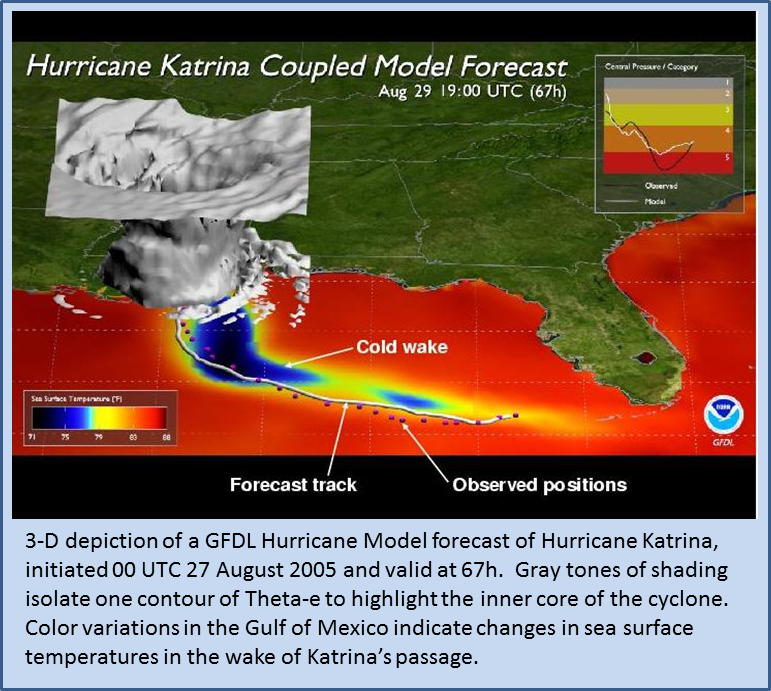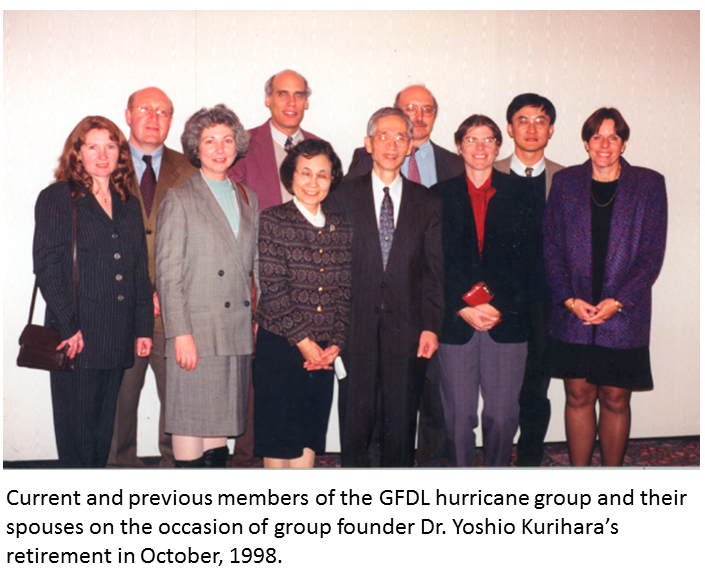GFDL Hurricane Science Symposium
Date: May 2, 2017
Location: GFDL Smagorinsky Room, Princeton NJ, US A
A
For more than 45 years, research scientists at GFDL along with their collaborators at external institutions have made seminal contributions to the science in numerous areas related to regional hurricane model development. These contributions not only led to the success of the GFDL hurricane model as an operational forecasting tool, but also played a part in laying the foundation for later hurricane modeling efforts both within and outside of NOAA.
After more than 40 years of federal service, Morris Bender, research scientist for hurricane modeling and science at GFDL, recently retired. At the same time, the GFDL Hurricane Model, which has served as an operational forecasting tool for the National Weather Service since 1995 and the U.S. Navy since 1996, is being retired from operations this year. This symposium affords the opportunity for attendees to review the body of research centered around the development and use of the GFDL hurricane model and to share some of the latest advancements in hurricane science from GFDL and the research community.
Registration:
If you plan to attend the symposium, please register (free) at this link.
Agenda
| Introduction | 1:00 | V. Ramaswamy (GFDL Director) |
| Session 1 | 1:10 | Moderator: Steve Lord (NWS) |
| 1:20 | History of the GFDL hurricane group and highlights of its research (Robert Tuleya — CCPO/ODU, retired GFDL) | |
| 1:40 | Development of time-differencing and grid-nesting schemes in the GFDL hurricane model (Greg Tripoli – U. Wisconsin) | |
| 1:50 | The GFDL hurricane model as an operational tool for the National Weather Service and the U.S. Navy (Tim Marchok — GFDL) | |
| 2:10 | The evolution of hurricane track and intensity guidance at the National Hurricane Center (Mark DeMaria — NHC) | |
| 2:30 | Advances in the modeling of tropical cyclone – ocean interactions (Isaac Ginis — URI) | |
| Break | 2:50 | |
| Session 2 | 3:10 | Moderator: S. Gopalakrishnan (AOML / HRD) |
| 3:20 | Impact of GFDL hurricane modeling on TC community modeling efforts (Vijay Tallapragada — NWS) | |
| 3:40 | Spiral gravity waves radiating from tropical cyclones (Dave Nolan — U. Miami / RSMAS) | |
| 4:00 | Tropical cyclones and climate (Tom Knutson — GFDL) | |
| 4:20 | Use of FV3 in future hurricane modeling efforts (Jan-Huey Chen and S.J. Lin – GFDL) | |
| 4:40 | Final thoughts (Morris Bender, along with current and past members of the GFDL regional hurricane modeling group) | |
| 5:00 | Adjourn | |
| 5:45 | Dinner — at the historic Rocky Hill Inn |



